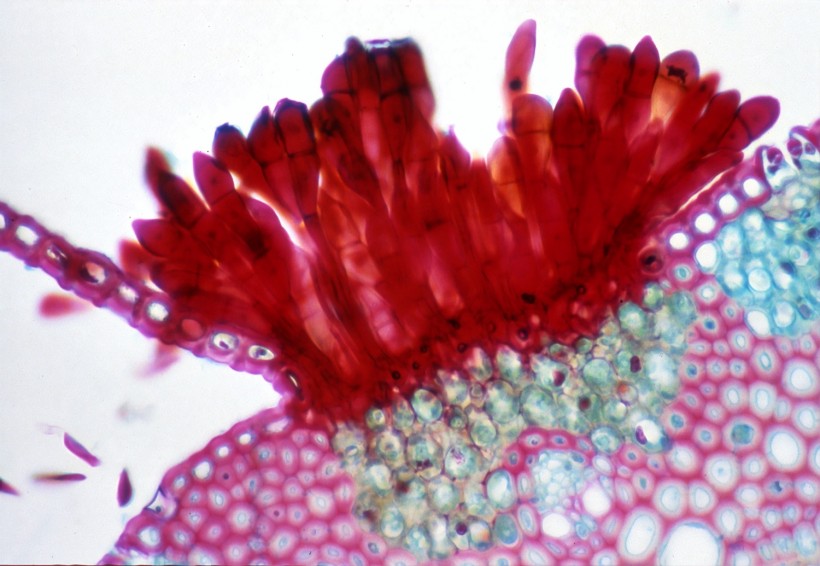The notion of a mutant fungus infecting humans has been widely portrayed in the media, especially as it is scientifically possible. While the world is not yet at that stage, scientists have shown how a pathogenic fungus might develop in warmer environments to better resist the heat within humans.
Scientists believe these pathogens may become a larger menace in terms of disease as they evolve into a world that is continually becoming hotter due to climate change.

Photomicrograph revealed the histopathologic morphology associated with the agriculturally-related condition known as wheat rust, caused by the fungal organism, Puccinia rust fungus, or Puccinia graminis, as it invaded the cuticle of a wheat stalk.
Dangerous Fungal Infections Are on the Rise
Dangerous fungal infections are on the rise in the US as temperatures rise, as per The Wallstreet Journal. Infectious-disease specialists said that the human body's usual temperature of 98.6 degrees Fahrenheit (37 degrees Celsius) has long been too high for most fungi to grow.
However, a new study suggests that certain fungi may be evolving to withstand higher heat stress, even under circumstances within the human body. Climate change may also be facilitating the spread of some pathogenic fungi.
Infectious disease expert Peter Pappas from the University of Alabama in Birmingham said that there is a genuine danger that formerly innocuous fungi can suddenly become potential disease-causing agents as they become more consistently exposed to warmer temperatures.
Furthermore, public-health specialists report an increase in deaths from fungal infections partly due to an increase in the number of individuals with compromised immune systems, who are more prone to severe fungal illness.
The Centers for Disease Control and Prevention (CDC) recorded at least 7,000 individuals in the United States who died from fungal diseases in 2021, up from hundreds of people per year in 1970. They claim that there are few effective and harmless drugs for treating such illnesses.
In the computer game and HBO drama "The Last of Us," a fungus infects a large number of humans, transforming them into horrible monsters. The fungus is based on a true genus, Ophiocordyceps, which has species that infect and kill insects. Infectious disease experts said that rising temperatures may have facilitated it to spread and adapt to human hosts and expand its range.
READ ALSO: Lung Infections From Soil Fungi Are Becoming a Serious Threat
Evolving Pathogenic Fungus Could Harm Humans
The findings of the study, titled "Genome-wide Analysis of Heat Stress-stimulated Transposon Mobility in the Human Fungal Pathogen Cryptococcus deneoformans" published in the Proceedings of the National Academy of Sciences, showed that higher heat makes more of the transposable elements of a pathogenic fungus get up and move around within its DNA that changes its genes.
Postdoctoral researcher Asiya Gusa from the Duke University School of Medicine said that these mobile elements are likely to contribute to adaptation in the environment and during infection.
They tested the pathogenic fungus known as Cryptococcus deneoformans in a laboratory setting to see how heat stress could speed the mutations up. After 800 generations of growth, they found that transposon mutations were five times higher in fungi cultivated at a body temperature of 37 degrees Celsius compared to those raised at a 30-degree Celsius temperature.
Gusa said that these fungi are transmitted via spores in the air. Humans usually breathe them but the immune systems fight them off. More so, a fungus is larger and face masks can protect people from harmful fungi.
RELATED ARTICLE: Next Pandemic Could Come from Fungi, Here's Why
Check out more news and information about Fungi in Science Times.














